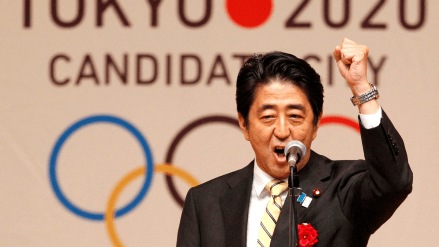By OORJA TAPAN
It was a 17th-century Mughal prince Dara Shikoh’s book Majma-ul-Bahrain which was paid homage by former Prime Minister of Japan, Shinzo Abe, who used its title as a metaphor to redesign the “Asia-Pacific” into the “Indo-Pacific” on Indian soil. Abe-San (attributed as the ‘father of QUAD’) brought India to the heart of his Indo-Pacific policy as part of his famous speech, “Confluence of the Two Seas” in the Indian Parliament in 2007. On 8th July 2022, the longest-serving Prime Minister of Japan and one of the most influential leaders of the Liberal Democratic Party (LDP) of Japan was gunned down during an election campaigning speech. This came as a severe jolt to the Japanese populace in a country with tight gun laws combined with a rank under the Top 10 peaceful countries in the world and where political violence predates to pre-World War period. The last time such an assassination took place in a developed country was in 1986 when the Swedish Prime Minister, Olof Palme, was killed in a gunshot.
The former Japanese PM Shinzo Abe was one of the tallest leaders in the history of Japan with his fair share of controversies. Hailing from a mammoth political dynasty in Japan, Abe-San had a dynamic and consequential political career. Here, a case in point is his two grandfathers on either side who had diametrically opposing views/ideologies on Japan’s policy. Abe’s worldview on Japan’s military had always been tilted towards his maternal grandfather, Nobosuke Kishi’s militaristic/hawkish stance (Kishi was nicknamed ‘Monster of the Showa era’ in Northeast China for his ruthless rule). In his speeches, he rarely mentioned his paternal grandfather Kan-Abe who was known for his dovish stance- as a symbol of peace, actively campaigning against Japan’s involvement in World War II. When the Japanese Constitution was rewritten to usher in democratic reforms in the post-war period after its unconditional surrender, Article 9 was included in it to forever renounce war and not to maintain any war potential land, sea or air forces. Shinzo Abe had always tried to amend the Japanese Constitution in favour of the military recognising new geopolitical realities of the 21st century.
Several Japanese Prime Ministers, before Abe, had apologised to other nations for Imperial Japan’s war crimes during World War II. However, Abe either forwent mentioning such horrors or simply, refuted them. He even downplayed the issue of ‘comfort women’ – it is estimated today that around 200,000 Asian women from China and South Korea were kidnapped and treated as slaves for the Japanese soldiers in ‘comfort stations’ during World War II. Abe was also criticised for his anti-China strategies in the Indo-Pacific region by the Chinese Communist Party.
Despite the above-mentioned controversies, Abe is still considered an outstanding leader today because of his astute statesmanship and far-reaching vision in society, economy and international relations. He was known as one of the greatest champions and leaders of the liberal order in Asia. He made Japan the ‘quintessential smart power’ and made it punch above its diplomatic and economic weight through his regional diplomacy and what is known as, ‘Abenomics’, at the domestic level. When Abe returned to power in 2012 for the second time, Japan was undergoing a recession and had lost its position as the largest Asian economy to China and India. Through ‘Abenomics’, he revived the Japanese economy via three major strategies or the ‘three arrows’ – ultra-low interest rates, easy government spending and structural economic reforms to boost productivity.
On the regional front, while America was ‘pivoting to Asia’ and India was ‘looking East’, Abe made Japan ‘look West’ and built strong coalitions with India, Australia and ASEAN nations to strengthen the ‘arc of democracy’ against aggressive Chinese actions in the region. Former US President Donald Trump in 2017 borrowed Abe’s phrase of a ‘free and open Indo-Pacific’ in his Vietnam visit. QUAD 2.0 was created with India having 2+2 dialogue mechanisms with all three QUAD members, namely Japan, USA and Australia. Apart from the historical Japanese Overseas Development Aid (ODA) to India moving to a special strategic and global partnership between the two nations, the relationship towers Delhi Metro, bullet train projects and Indo-Japan peaceful nuclear deal. Abe together with PM Modi launched the Asia-Africa Growth Corridor (AAGC) to provide alternatives to the Chinese Belt and Road Initiative in the region along with joint projects in Sri Lanka and Maldives. To buttress such regional frameworks, the present governments of Japan and India have also collaborated on the Supply Chain Resilience Initiative (SCRI) with Australia in 2021 and the Indo-Pacific Economic Framework (IPEF) with the USA and others in 2022.
Abe’s vision in his ‘Confluence of the Two Seas’ speech can be easily seen as the precursor to the aforementioned multilateralism and transparent networks in the Indo-Pacific region. When nations like India, Australia, the USA and others continue to pay a fitting tribute in honour of Shinzo Abe, nations like China share a complicated history with the dynasty he hails from. Despite all the hue and cry over certain political scandals, Abe’s glorious diplomatic and political footprints cannot be wiped away. Today with a belligerent China in the Indo-Pacific, a resurgent Russia in Europe and the ‘no-limits’ friendship between the two nations coupled with an unstable North Korea in the mix, Japan has updated its defence spending in line with Abe’s calls for a stronger Japan and Indian Indo-Pacific analyses continue to remember his stellar foreign policy contributions.
Author is a Non-Resident Vasey fellow (2024-25) at the Pacific Forum (Hawaii, United States) and is pursuing her Doctoral research at the Centre for International Politics, Organisation and Disarmament (CIPOD), School of International Studies, Jawaharlal Nehru University, New Delhi, India.
Disclaimer: Views expressed are personal and do not reflect the official position or policy of FinancialExpress.com Reproducing this content without permission is prohibited.
